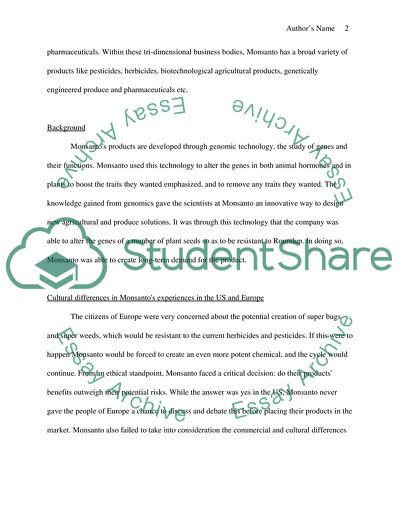Cite this document
(Ethical Paradigm - Monsanto Case Study Example | Topics and Well Written Essays - 1500 words, n.d.)
Ethical Paradigm - Monsanto Case Study Example | Topics and Well Written Essays - 1500 words. https://studentshare.org/ethics/1751380-ethical-paradigm-monsanto
Ethical Paradigm - Monsanto Case Study Example | Topics and Well Written Essays - 1500 words. https://studentshare.org/ethics/1751380-ethical-paradigm-monsanto
(Ethical Paradigm - Monsanto Case Study Example | Topics and Well Written Essays - 1500 Words)
Ethical Paradigm - Monsanto Case Study Example | Topics and Well Written Essays - 1500 Words. https://studentshare.org/ethics/1751380-ethical-paradigm-monsanto.
Ethical Paradigm - Monsanto Case Study Example | Topics and Well Written Essays - 1500 Words. https://studentshare.org/ethics/1751380-ethical-paradigm-monsanto.
“Ethical Paradigm - Monsanto Case Study Example | Topics and Well Written Essays - 1500 Words”. https://studentshare.org/ethics/1751380-ethical-paradigm-monsanto.


